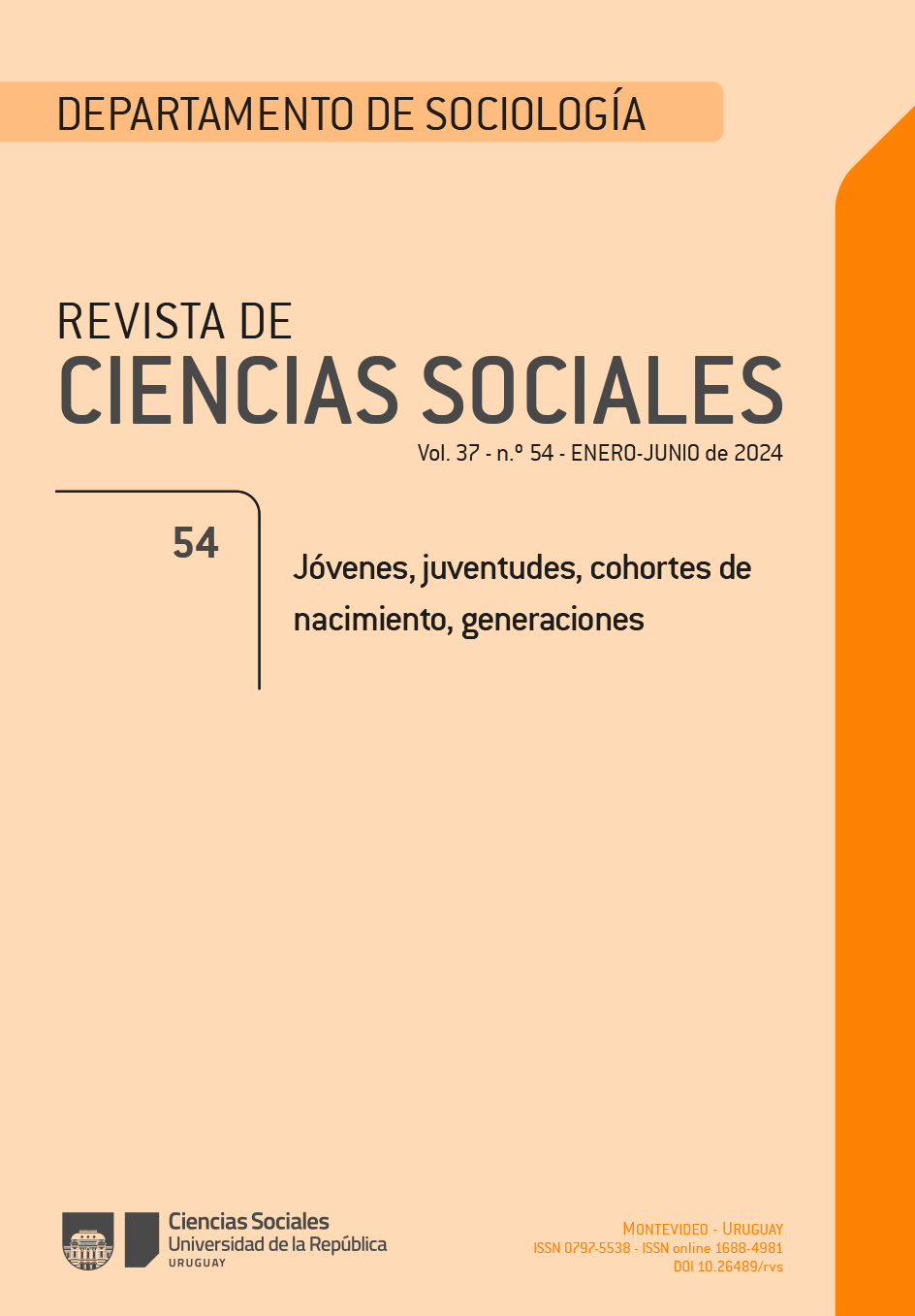The “glass ceiling” phenomenon.
Geopolitical biases of productions in indexed journals
DOI:
https://doi.org/10.26489/rvs.v37i54.7Keywords:
glass ceiling, women, professional career, sexual division of laborAbstract
The inclusion of women in the job market is a recurring subject of research and one of the phenomena observed is called “glass ceiling”, which represents the reduced degree of opportunities for professional advancement given to women. In this work, the study of this phenomenon was analyzed using bibliometric data. As a database, the Web of Science was used, whose impact is internationally recognized by academia. The results showed a convergence of citations in a few texts and a concentration of articles in journals published in countries in the Global North. There was also a high concentration of scientific production in small collaborative networks, led by researchers located in institutions in the Global North
Downloads
References
Alatas, S. F. (2003). Academic dependency and the global division of labour in the social sciences. Current Sociology, 51(6), pp. 599-613.
Barbosa, A. C. A.; D. M. P. Gebert e A. Kist (2019). LECA: Pacote educacional com interface gráfica de usuário para estatística descritiva e probabilidade no R. Sigmae, 8(2), pp. 306-314.
Barreto, M. L. (2013). O desafio de avaliar o impacto das ciências para além da bibliometria. Revista de Saúde Pública, 47(4), pp. 834-837.
Botelho, L. L. R.; S. G. Bölter e L. Scherer (2019). Produção científica sobre “teto de vidro”: análise bibliométrica na base de dados do Google Acadêmico entre os anos de 2010 e 2018. Trabalho de Conclusão de Curso, Universidade Federal da Fronteira Sul, Chapecó, SC, Brasil
Carneiro, L. B.; D. G. Gomes; V. Horz e M. A. de Souza (2021). Perception of women managers about the glass ceiling breakage. Revista Produção e Desenvolvimento, 7, e530. https://doi.org/10.32358/rpd.2021.v7.530
Connell, R. (2012). A iminente revolução na teoria social. Revista Brasileira de Ciências Sociais, 27(80), pp. 9-20.
Cotter, D. A.; J. M. Hermsen; S. Ovadia e R. Vanneman (2001). The glass ceiling effect. Social Forces, 80, pp. 655-681. https://doi.org/10.1353/sof.2001.0091
Del Vechio, A. (2017). Sistema Nacional de Ciência, Tecnologia e Inovação e a pesquisa na universidade brasileira: implicações geopolíticas. Laplage em Revista, 3(3), pp. 133-146.
Dirlik, A. (2007). Global South: predicament and promise. The Global South, 1(1-2), pp. 12-23.
Elacqua, T. C.; T. A. Beehr; C. P. Hansen e J. Webster (2009). Managers’ beliefs about the glass ceiling: interpersonal and organizational factors. Psychology of Women Quarterly, 33(3), pp. 285-294. https://doi.org/10.1177/036168430903300304
Federici, S. (2019). O ponto zero da revolução: trabalho doméstico, reprodução e luta feminista. São Paulo: Elefante.
Federici, S. (2017). Calibã e a bruxa: mulheres, corpos e acumulação primitiva. São Paulo: Elefante.
Gingras, Y. (2016). Os desafios da avaliação da pesquisa: o bom uso da bibliometria. Rio de Janeiro: Editora da UFRJ.
Grangeiro, R. d. R.; M. S. Rodrigues; L. E. N. Silva e C. Esnard (2021). Scientific metaphors and female representativeness in leadership positions: a bibliometric analysis. Revista Psicologia Organizações e Trabalho, 21(1), pp. 1307-1316.
Hirata, H. (2021). Travail productif, travail de care. Actuel Marx, 70, pp. 62-76. https://doi.org/10.3917/amx.070.0062
Hooks, B. (2019). Teoria feminista: da margem ao centro. São Paulo: Perspectiva.
Lander, E. (2015). ¿Conocimiento para qué? ¿Conocimiento para quién? Reflexiones sobre la universidad y la geopolítica de los saberes hegemônicos. En: Z. Palermo (org.). Des/decolonizar la universidad. Buenos Aires: Ediciones del Signo, pp. 41-69.
Kataria, A.; S. Kumar e N. Pandey (2021). Twenty‐five years of Gender, Work and Organization: a bibliometric analysis. Gender, Work e Organization, 28(1), pp. 85-118. https://doi.org/10.1111/gwao.12530
Minasi, S. M.; V. F. Mayer; G. E. O. Santos (2022). Desigualdade de gênero no turismo: a mulher no ambiente profissional no Brasil. Revista Brasileira de Pesquisa em Turismo, 16, e-2494. http://doi.org/10.7784/rbtur.v16.2494
Nunes, A. G. M.; M. A. Maciel; T. A. Beuron e L. V. Ávila (2021). Relação entre igualdade de gênero e o desenvolvimento sustentável (ODS 5): um panorama internacional da evolução das publicações na Web of Science. Revista Gênero, 22(1), pp. 1-30.
Paz, M. de S. D. (2015). Mulheres e tecnologia: hackeando as relações de gênero na comunidade software livre do Brasil. Tese, Universidade Federal da Bahia, Salvador, BA, Brasil.
Prado, L. Á. (2018). Mulheres de negócios e empoderamento feminino: análise em um grupo fechado no Linkedin, Dissertação, Centro Universitário Unihorizontes, Belo Horizonte, MG, Brasil.
Singh, S.; C. Sharma; P. Bali; S. Sharma e M. A. Shah (2023). Making sense of glass ceiling: a bibliometric analysis of conceptual framework, intellectual structure and research publications. Cogent Social Sciences, 9(1). https://doi.org/10.1080/23311886.2023.2181508
Valadares, S. S.; A. M. De Carvalho Neto; C. M. Mota-Santos e D. M. Diniz (2022). Women in mining: from subtle barriers to open prejudice. Revista de Gestão. https://doi.org/10.1108/REGE-10-2021-0193
Van Veelen R. e B. Derks (2022) Women academics perceive a thicker glass ceiling in social and behavioral fields than in the natural sciences and economics. Frontiers in Psychology, 13. https://doi.org/10.3389/fpsyg.2022.790211
Downloads
Published
Issue
Section
License
Copyright (c) 2024 Gabriela Barroso Lopes, Júlio Cesar Valente Ferreira, Herlander Costa Alegre Gama Afonso

This work is licensed under a Creative Commons Attribution 4.0 International License.


